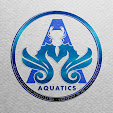Sunday 25 October 2020
මුහුදු ඌරාගේ කඳුලු කතාව
Monday 19 October 2020
Dear Coral Don't Cry..
Sunday 11 October 2020
First step to Hardscape
Substrate
- Base later fertilizing substrate
- General plant substrate (soil)
- Inert substrate (sand, gravel or pebbles)
Main roles of substrate in a planted aquarium;
- Filtration
- Providing nutrients to the plants.
- Providing chemical balance by maintaining/reducing pH and GH (general hardness)
Role of each layer of the substrate system
1. The base later fertilizing substrate
This is a high nutrient contain substrate and available in different sizes. Normally use as a layer about 1 cm thick. This should not use directly as a substrate and always this later must be covered with general plant substrate soil.- Provide high nutrient content
- Porous nature helps aeration.
- Hold millions of bacteria that helps for the nitrogen cycle.
 |
| Figure 2: Base layer substrate. |
2. General plant substrate (soil, clay based)
- Provide base substrate for plants.
- Minimize the diffusion of nutrients from base later fertilizing substrate.
- Create porous nature that increase aeration in between soil grains.
- Provide some fertilizer for plant growth.
 |
Figure 3: A hardscape with seiryu stones and general planting soil. |
3. Inert substrate (sand/gravel)
 |
| Figure 4: Sandy substrate in a planted tank. |
Rocks
 |
| Figure 05: Seiryu stones |
 |
Figure 06: Small size black lava rocks (They have a low density due to their porous nature) |
 |
| Figure 7: A dragon stone |
 |
| Figure 8: Dark pagoda stones |
 |
| Figure 9: Hakkai stones |
 |
| Figure 10: Manten stones |
 |
| Figure 11: A hardscape made up of Petrified wood |
 |
Figure 12: Samurai stonesDriftwoodDriftwood also use to create a natural looking environment and this gives a additional beauty as well as provide substrate for plants like mosses, ferns, Anubias spp., Bucepalendra spp. |
“This article is mainly to send the massage of creating a more natural aquariums using all-natural materials like sand (planting soil is a man-made material, but it contains a natural soil and a rubber coat around it.), rocks, driftwoods and aquatic plants, rather than ordinary aquariums that we can see mostly in the country, because although the art of nature aquarium is famous in Europe, North and South America and Eastern Asia, this is new to our country. The information in this article is mainly based on the Green aqua videos and my personal experiences.”
References
· https://buceplant.com/collections/aquascaping-rocks
· https://www.youtube.com/watch?v=_yg090qE_W8
Monday 5 October 2020
Bio luminescence - ජෛව සන්දීප්තිය
මොකක්ද මේ ජෛව සන්දීප්තිය කියන්නේ?
ජෛව සන්දීප්තිය යනුවෙන් සරලව හඳුන්වන්නේ, කිසියම් ජීවියෙකු තුල සිදුවන රසායනික ප්රතික්රියාවන් මගින්
ආලෝකය නිපදවීමයි.ජෛව සන්දීප්තියෙන් නිපදවන ආලෝකයෙන් 20% පමණ ප්රමාණයක් තාපය බවට පත්
වෙනවා.
මෙම ජෛව සන්දීප්තිය මගින් විචිත්රවත් ආලෝක රටාවන් විහිදුවන ජීවීන් බොහෝමයක් සාගරය තුලින් හඳුනාගන්න පුළුවන්.
ජීවීන් ජෛව සන්දීප්තිය පෙන්වන්නේ ඇයි?
ජෛව සන්දීප්තිය මගින් ආලෝකය නිපදවීමෙන් විලෝපිතයන්ගෙන් පලායාම හා ආරක්ෂාවීම , ගොදුරු තමන් වෙත ආකර්ශනය කරගැනීම හා ගොදුරු හඳුනාගැනීම ,ඇතැම්විට එකම වර්ගයේ ජීවීන් අතර සන්නිවේදනය සහ සහකරුවන් සොයාගැනීම සඳහාත් ජෛව සන්දීප්තිය උපකාරී වෙනවා.
ජෛව සන්දීප්තිය මගින් විවිධ වර්ණ ඇතිවෙන්නේ කොහොමද?
ජෛව සන්දීප්තිය මගින් ආලෝකය නිපදවීමට Luciferin , Luciferase හෝ Photoprotein යන රසායනික සංයෝග සහභාගි වෙනවා. ජීවීන් නිපදවන ආලෝකයන් විවිධ වර්ණ වලින් යුක්ත වන්නේ ජෛව සන්දීප්තිය සඳහා සහභාගි වන Luciferin අණු වල පිළිවෙල අනුවයි.
ඇතැම් ජීවීන් තමන් තුල Luciferin සංයෝගය සංස්ලේෂණය කර ගන්නා අතර ඇතැම් ජීවීන් ආහාර මගින් හෝ සහජීවී සම්බන්ධතා මගින් Luciferin ලබාගන්නවා.
ජෛව සන්දීප්තිය පෙන්වන ජීවීන්
 |
| Firefly Squid Source: https://media.nationalgeographic.org/assets/photos |
Firefly Squid ලෙසින් හඳුන්වන මෙම දැල්ලන් විශේෂය ජපානයට අවේනික ජෛව සන්දීප්තිය පෙන්වන අපූරු ජීවියෙකි.
 |
| Comb Jelly Source: https://media.nationalgeographic.org/assets/photos |
 |
| Ton Sai, Krabi, Thailand Source: https://img.traveltriangle.com |
 |
| Manasquan Beach, New Jersey Source: https://img.traveltriangle.com |
මෙම ජෛව සන්දීප්තිය පාදක කරගෙන විවිධ සිනමා කෘති පවා නිර්මාණය වී තිබෙනවා .
| Source:http://atlanteangardens.blogspot.com |
























